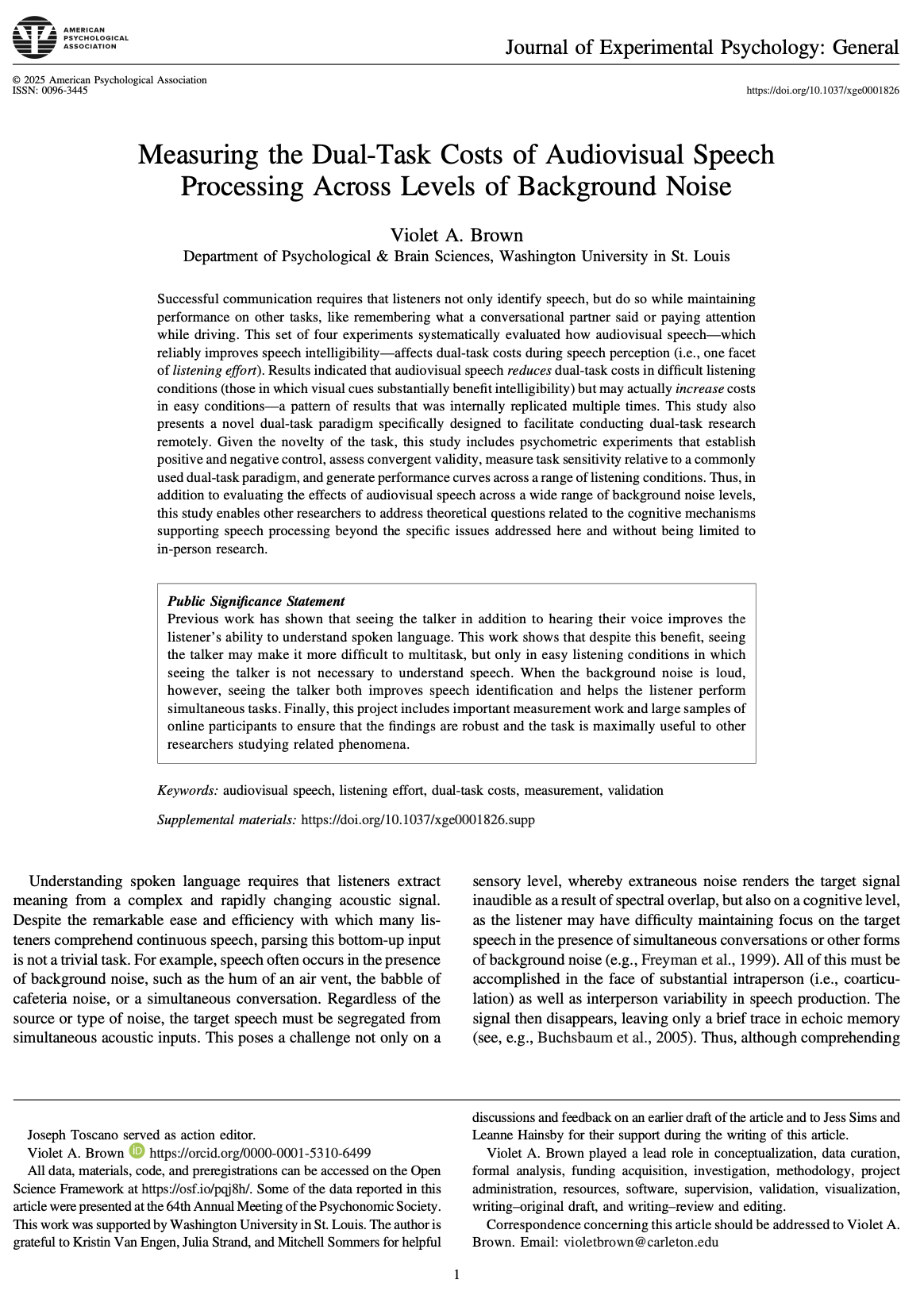
Measuring the Dual-Task Costs of Audiovisual Speech Processing Across Levels of Background Noise
Successful communication requires that listeners not only identify speech, but do so while maintaining performance on other tasks, like remembering what a conversational partner said or paying attention while driving. This set of four experiments systematically evaluated how audiovisual speech—which reliably improves speech intelligibility—affects dual-task costs during speech perception (i.e., one facet of listening effort). Results indicated that audiovisual speech reduces dual-task costs in difficult listening conditions (those in which visual cues substantially benefit intelligibility), but may actually increase costs in easy conditions—a pattern of results that was internally replicated multiple times. This study also presents a novel dual-task paradigm specifically designed to facilitate conducting dual-task research remotely. Given the novelty of the task, this study includes psychometric experiments that establish positive and negative control, assess convergent validity, measure task sensitivity relative to a commonly-used dual-task paradigm, and generate performance curves across a range of listening conditions. Thus, in addition to evaluating the effects of audiovisual speech across a wide range of background noise levels, this study enables other researchers to address theoretical questions related to the cognitive mechanisms supporting speech processing beyond the specific issues addressed here and without being limited to in-person research.








